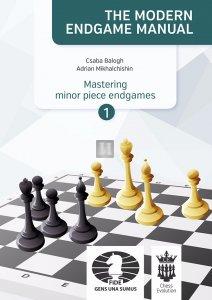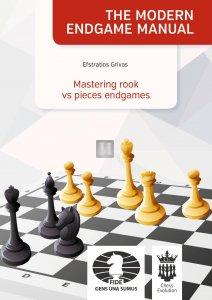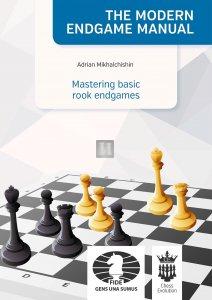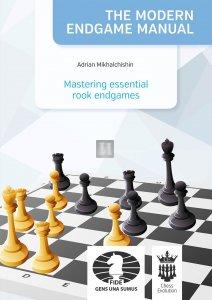Mastering Typical Rook Endgames - signed by GM Adrian Mikhalchishin
Mikhalchishin Adrian

The main concept of each book is to provide theoretical knowledge which can be used in practical games. It means the focus of the books will be on those positions which are most likely to occur — and the practical playing of them. That’s why you will firstly meet the theoretical part, and secondly the practical examples of how games actually continued in a particular endgame. Yes, you’re right, you won’t fi nd too many very complicated studies, stunning manoeuvres or rarely-appearing positions — and there is a simple reason why not! How often do we see positions, for example two knights vs pawn where one knight is blocking the pawn and the other one tries to get the king to the corner before releasing the second knight for the mate? Or constellations with crazy material on the board? This might happen in one game out of 100! You could spend hundreds of hours working on something that might bring you “only” a single point more out of 100 games!
Descrizione
In this series of eight endgame books, FIDE Senior Trainer Adrian Mikhalchishin, FIDE Senior Trainer Efstratios Grivas and IGM Csaba Balogh combine their experience as trainers and as practical players to create something very special. The authors aim for very understandable explanations of every endgame position in each book.
The specification:
◆ 1st book — Queen and pawn endgames.
◆ 2–3 — Minor piece endgames (bishop and knight endgames).
◆ 4–5 — These will feature the fight between diff erent material constellations.
◆ 6–8 — These books are going to focus on the most common endgames, which are of course rook endings.
The main concept of each book is to provide theoretical knowledge which can be used in practical games. It means the focus of the books will be on those positions which are most likely to occur — and the practical playing of them. That’s why you will firstly meet the theoretical part, and secondly the practical examples of how games actually continued in a particular endgame. Yes, you’re right, you won’t fi nd too many very complicated studies, stunning manoeuvres or rarely-appearing positions — and there is a simple reason why not! How often do we see positions, for example two knights vs pawn where one knight is blocking the pawn and the other one tries to get the king to the corner before releasing the second knight for the mate? Or constellations with crazy material on the board? This might happen in one game out of 100!
You could spend hundreds of hours working on something that might bring you “only” a single point more out of 100 games!
Informazioni
- Casa editrice Chess Evolution
- Codice 7280
- Anno 2018
- Pagine p. 336
- Isbn 9786155793073
 Italiano
Italiano
 English
English





